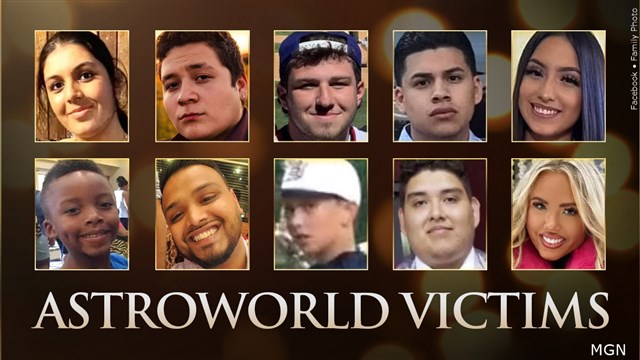March 2020 Astronomy From the Trackman Planetarium at Joliet Junior College
March 2, 2020 8:44AM CST

Planets – Venus is the only planet visible in the evening sky during March. Venus will continue to be very bright as its orbit makes it appear farther from the sun each night until March 24 th. After this maximum elongation from the sun, Venus will begin to quickly orbit toward the sun (as seen from Earth) until it disappears in the sun’s glow at the end of May. Because Venus is between Earth and the sun, it has phases like the moon. At mid-March, only half of the planet is visible in a telescope. Saturn, Jupiter and Mars are in the morning sky before sunrise. During the last two weeks of March, the three planets will be in conjunction and will appear very close together. Jupiter will be the brightest of the three. Mars will be the red planet and Saturn will be the yellow planet. Mercury is too close to the sun for viewing.
Stars – Orion still dominates the evening sky during March. Look for the three stars that make up his belt and the red star (Betelgeuse) that marks his shoulder. Ursa Major with the Big Dipper is high in the sky at mid-evening and below the Big Dipper is the constellation of Leo the Lion with its bright star, Regulas.
Betelgeuse False Alarm – Back in January it appeared that Betelgeuse, the red star in Orion, was dimming and might be ready to go supernova. Betelgeuse continued to dim through mid-February but now it is starting to appear brighter. There go the hopes for a spectacular astronomical event.
Open House – Planning on starting or returning to college this year? Visit the Open House at the JJC Main Campus,1215 Houbolt Road, on March 21 st from 9 am until noon to get information on classes, scholarships and financing. Call (815) 280-2562 for more information.
Spring Equinox – The first day of spring – the Spring Equinox – is on March 20 th. On the equinox, the sun crosses the sky on the Celestial Equator – an imaginary line in the sky that is directly above our Earth’s equator. On the equinox the sun is above the horizon for 12 hours and below the horizon for 12 hours. Equinox means equal day and night. After the equinox, the farther north you go, the longer the sun is in the sky each day. At the north pole, the sun will not set until the Autumnal Equinox in September. On the equinox, the sun rises directly to the east and sets directly west.
Time Change – On March 8 th we change back to Daylight Saving Time. Move the clock forward one hour. After the time change, in the Joliet area, sunset will be at 6:45 pm. Unfortunately, sunrise will get pushed back until 7:15 am.
Full Moon – The full moon is on March 9 th and was known to the Native Americans as the Full Worm Moon. The moon will be close to Earth at this full moon, and for that reason it is often referred to as the “Super Moon”. This is one of four “Super Moons” this year. However, no matter how large the moon’s image appears, at the horizon or high in the sky, the image is never as large as the tip of your little finger when your arm is extended. (Try it!)
Mars Meteorites – There are around 61,000 known meteorites on Earth. We frequently find new meteorites that have recently hit Earth or were buried under the surface for millions of years. An estimated 25 million meteoroids, micrometeoroids and other space debris enter Earth’s atmosphere each day. Almost all of it burns up in our atmosphere. That which reaches Earth’s surface is a meteorite. About 200 of the known meteorites are special because they came from Mars. When the solar system was forming, Mars, like Earth, was bombarded with protoplanets which knocked debris from Mars’ surface into space. (Mars has a third of Earth’s gravity and so material can be thrown off its surface easier.) By studying these Mars meteorites, we can determine the surface conditions on Mars during the early solar system. We have learned that Mars was a very different place, with heavy volcanic activity, oceans, and an atmosphere. Mars did not have the gravity to hold on to its oceans or atmosphere and it no longer has active volcanos.
Visible Comet This Spring? – There is a chance we will have a visible comet in the sky during mid-May. Comets are not too predictable, but Comet Y4 ATLAS might become the first naked eye visible comet since Comets Hale-Bopp and Hyakutake were visible in the late 1990s. Comet Y4 ATLAS last visited the inner solar system sometime back in the late 4th millennium BC, and will be back in our skies in the late 76th century AD.
Planetarium – The public shows at the Trackman Planetarium this month are:
March 3 rd at 7:30 pm – “ Humans and Robots in Space” What are more efficient – humans or robots?
March 12 th at 6:30 pm – “We Got To The Moon” A children’s show about going to the moon.
March 17th at 7:30 pm – The Sun our Living Star”. A deep look at the sun and its effect on Earth.
March 28 th at 6:30 pm – “Larry Cat In Space” A long time children’s favorite about a cat going to the moon.
All shows at the Trackman Planetarium start with a trip through the current sky showing the position of the planets, stars and constellations. Admission to the shows is free. We are taking reservations for school trips, scout outings, etc., for private planetarium shows. There are still a few dates left for this school season. To make a reservation, email [email protected].






